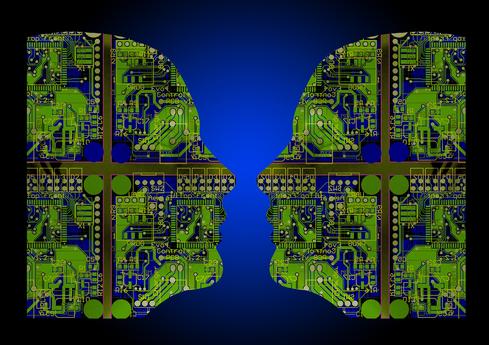Google: IoT Can Help The DisabledGoogle: IoT Can Help The Disabled
At Mobile World Congress, the head of Google's accessibility engineering team explained how the Internet of Things can help those with disabilities.


11 IoT Programming Languages Worth Knowing
11 IoT Programming Languages Worth Knowing (Click image for larger view and slideshow.)
BARCELONA – It was the last panel session of the Mobile World Congress, and the topic was business models for "connected" consumer packaging in the world of the Internet of Things. The moderator threw the floor open for questions, and one woman in the audience asks how this explosion of connected products could help people with disabilities?
It was a good question, and I wanted to know more about what this would mean in the IoT world.
I went up to talk to her at the end of the session and she introduced herself as Eve Andersson.
Andersson, who holds the title of manager, accessibility engineering at Google Research, oversees the company's central accessibility team, which is dedicated to developing special features for people with disabilities and making sure that all Google products are designed with accessibility in mind.
During the Mobile Accessibility session at MWC, Andersson spoke along with the chief accessibility officers from IBM and Microsoft.
Since the United Nations estimates that about 15% of the world's population lives with some type of disability, it is critical for the mobile industry to design specific products and services that can help the disabled enjoy the full benefits of digital society.
I asked Andersson about this and she immediately said: "I have a lot to tell you."
Andersson started by describing her group and its role within Google. She mentioned three main roles for the Accessibility Engineering Team:
Innovate to create new things related to helping people with disabilities.
Work with other product teams across the company to help make sure that Google products can be used by people that have visual loss, or hearing loss, or dexterity loss, or another type of disability.
Work with outside organizations through partnerships within the industry, work with advocacy organizations, or give research grants to universities that are doing interesting things in the area of accessibility.
Andersson gave an overview of the different features that Google has implemented in different products, such as the Chrome browser, YouTube, Hangouts, Chrome OS, and others.
Already In Android
In many Google products, there are already existing features such as magnification, talkback, captioning, large text, and text-to speech that help those with disabilities. Andersson then mentioned what Google is putting into the latest version of Android.
An important app that Google built for Android, she says, is "Braille Back." As Andersson noted:
It is a service to help people who use a refreshable Braille display to use their device. A refreshable Braille display is hardware, made by various manufacturers, that has pins that change, depending on what it is on the screen, so it can get Braille output in real-time. Most of them also combine a keyboard plus a display, all in one device. So BrailleBack helps somebody that uses a refreshable Braille display to use the Android phone, which is very important especially in the education space, because students need to learn how to spell, how to do punctuation, and so thus relying on spoken output is not easy for them.
One new feature, recently released within Android 5.0, or Lollipop, is Switch Access.
She explained: "Switch Access allows somebody who uses a mechanical switch to use their device. If you have limited use of your limbs then it’s very difficult to use a phone that uses a touchscreen. Stephen Hawking, for example uses a switch which detects when he moves his cheek muscle."
That is one example of a switch.
Google has also added into Android the ability for somebody to control a device using one or more switches. When people use just one switch, then the device automatically scans through the different options that they could press until the switch is pressed, which then opens the application or types the letter that is highlighted.
However, the ability to use more switches means the users has more control. Each switch could correspond to a different function, such as "next," "back," or "home."
"This opens up Android to a whole new group of people, that have not been able to use it before," she said. "And this is really important because generally people with disabilities do not want to have hardware that is just for them They want to have the normal hardware that all of their friends have, that has all the cool applications on it … In classrooms, people want to be able to use the same hardware that their classmates use, and so by building in these functions into stock Android, as opposed to a separate device, people don’t have to be segregated."
[Read about the coolest products from MWC 2015.]
As for whether people need to download separate apps to use these functions, she said: "Switch Access is built into [on Android OS 5.0]; TalkBack, magnification, those are all built-in, BrailleBack they have to download, but it is free."
Andersson is also excited about the possibilities of the IoT and wearables for people with disabilities.
"There are two components to accessibility: One is helping people use software to navigate the virtual world, but the other component is to help people navigate the real world," she told me. "I think that’s where wearables and the IoT are coming in, and we are going to see a lot of innovation in the coming years."
As the conference venue was closing down and we walked to the exit I asked her about the satisfaction of what she does at Google, and she replied: “It makes me feel good every day because I get to help people."
Attend Interop Las Vegas, the leading independent technology conference and expo series designed to inspire, inform, and connect the world's IT community. In 2015, look for all new programs, networking opportunities, and classes that will help you set your organization’s IT action plan. It happens April 27 to May 1. Register with Discount Code MPOIWK for $200 off Total Access & Conference Passes.
About the Author
You May Also Like






